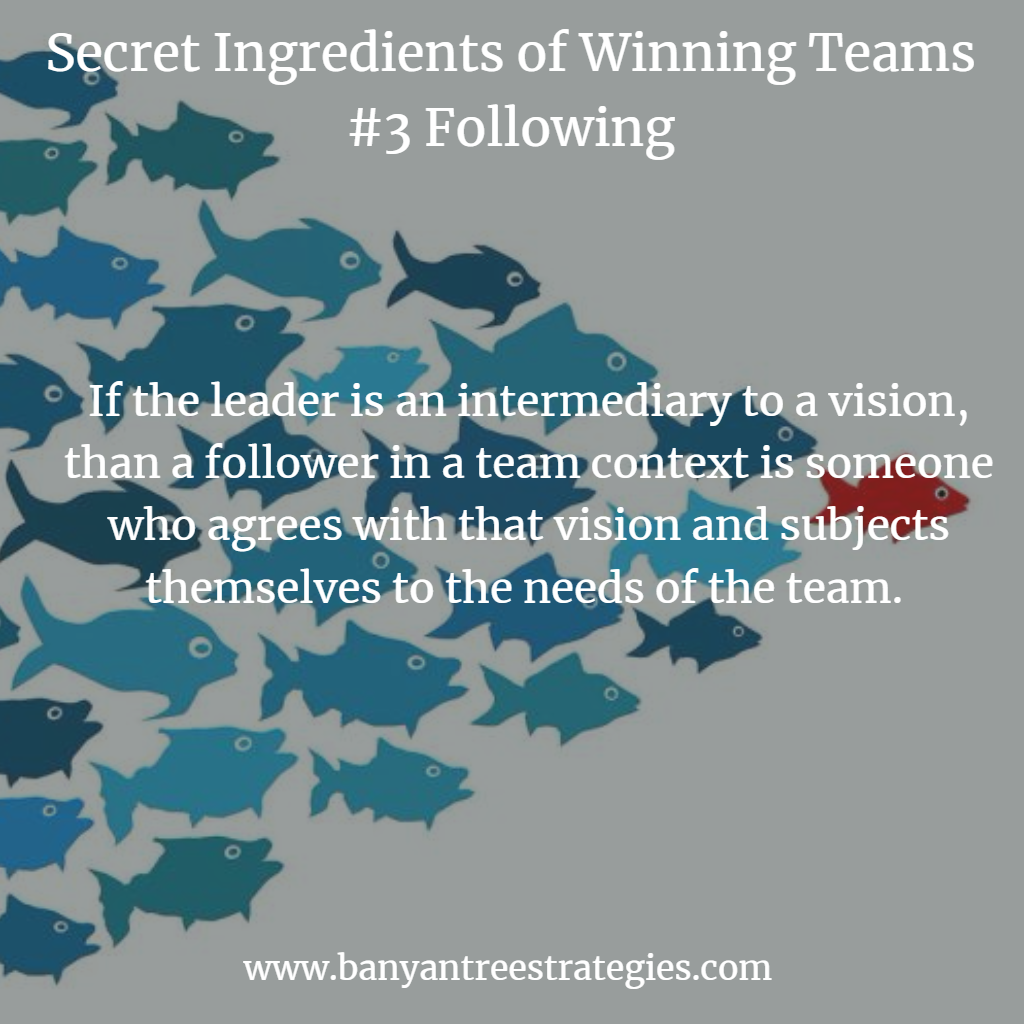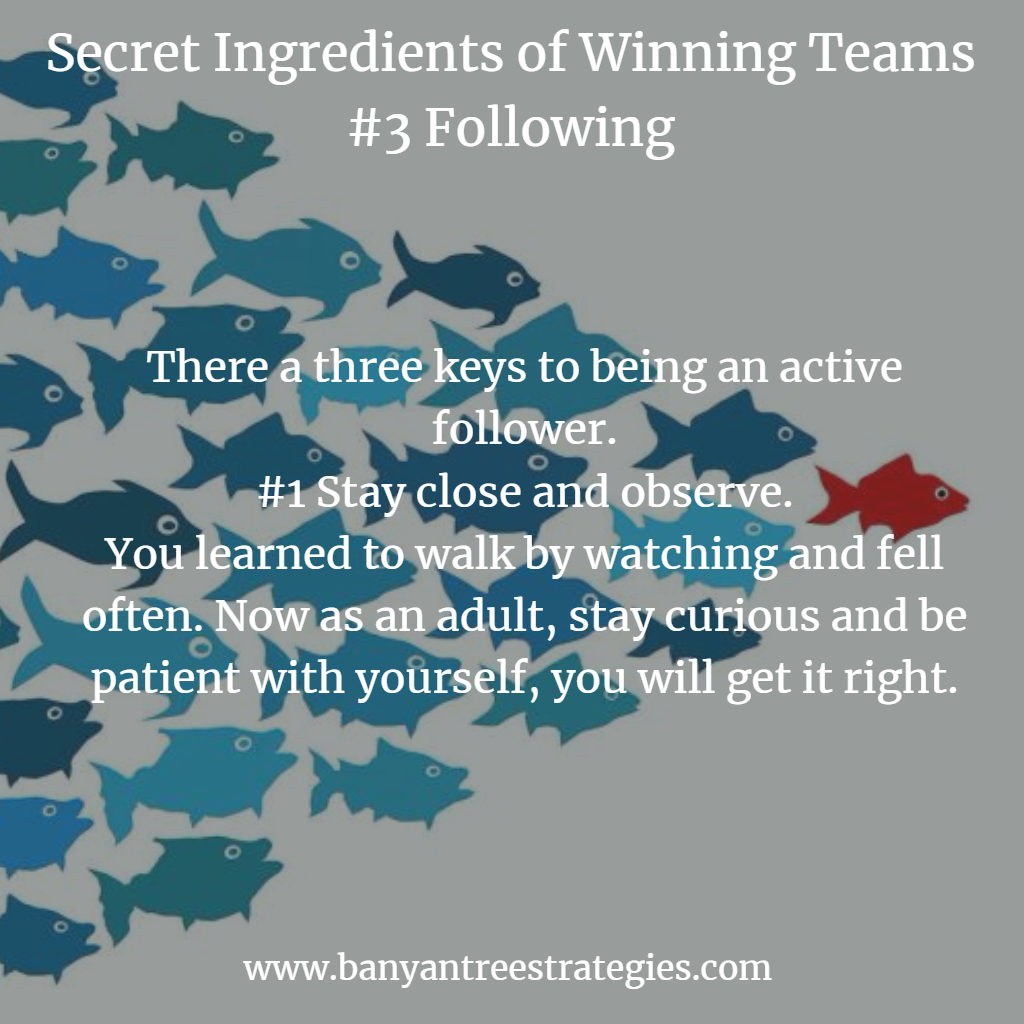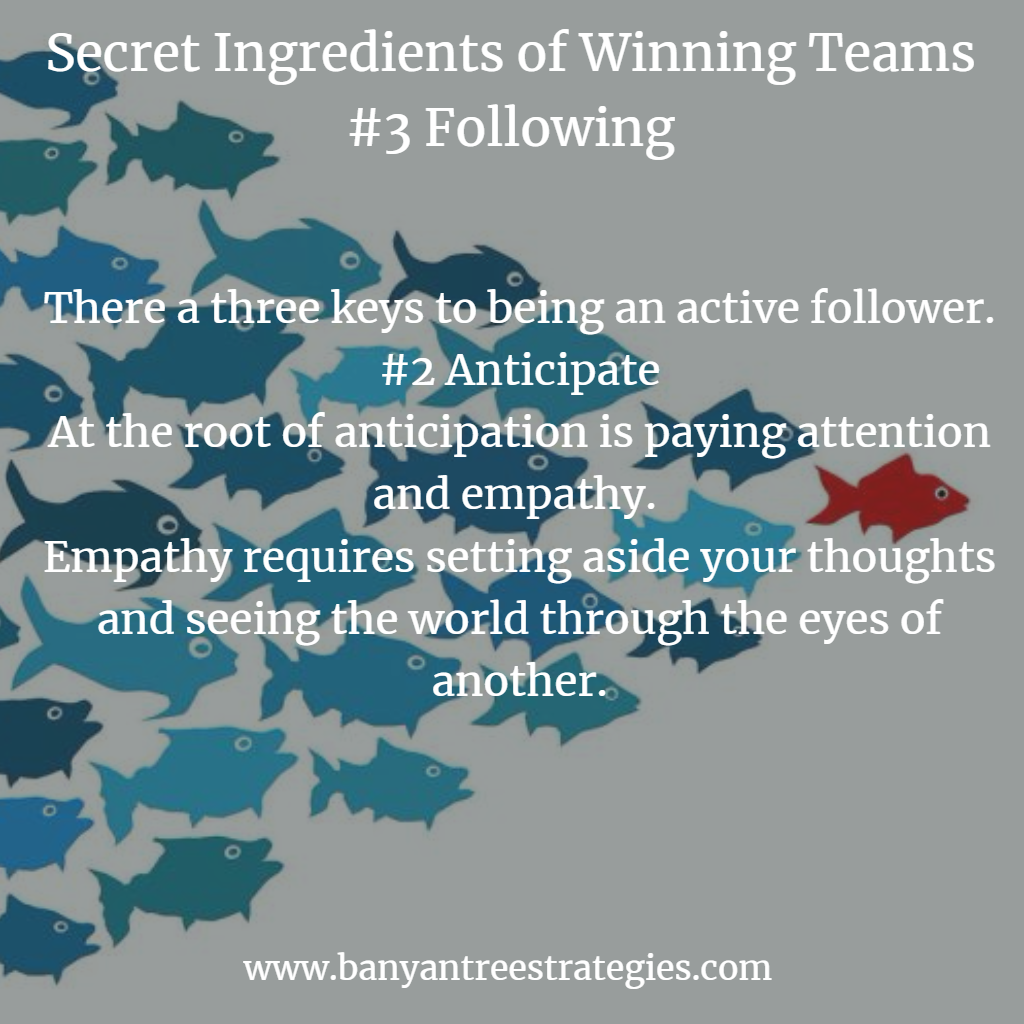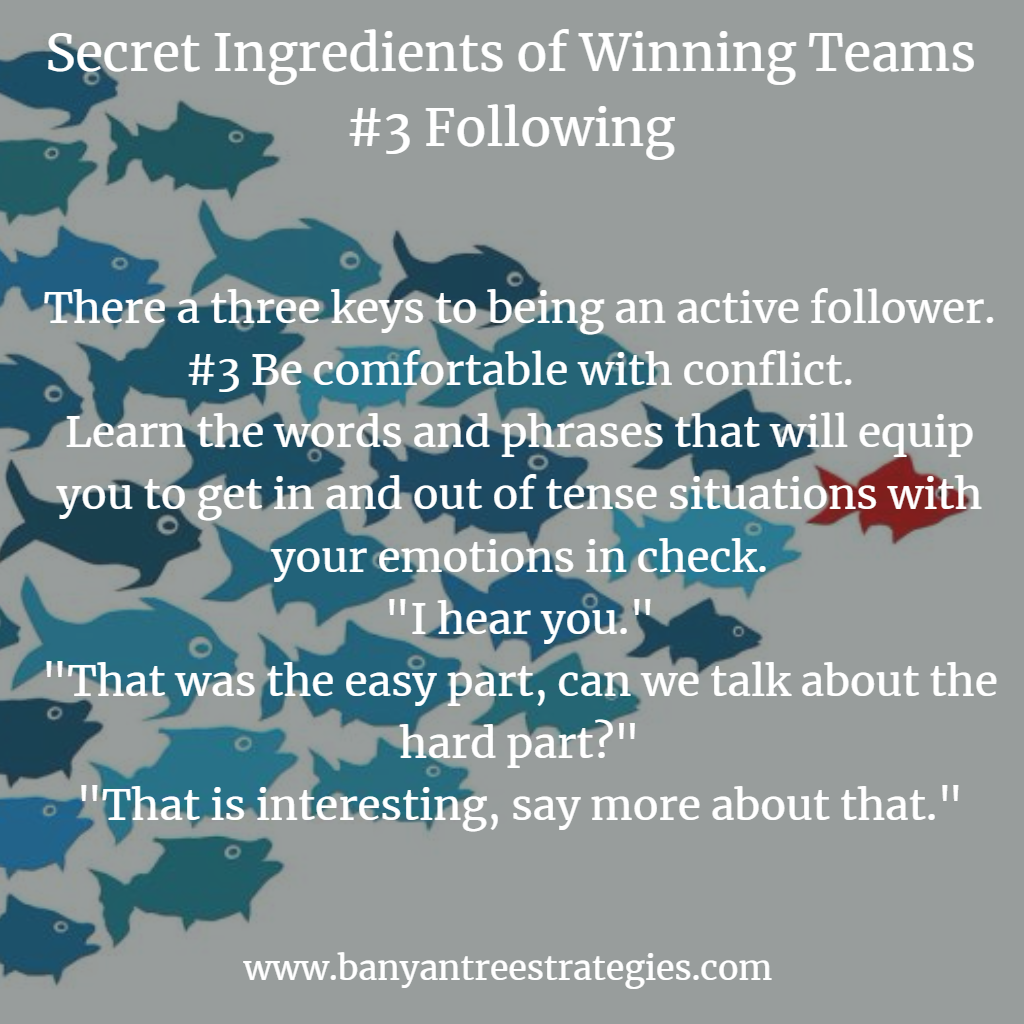Secret Ingredients of Winning Teams #3 - Following |
|

If the leader is an intermediary to a vision, then a follower in a team context is someone who agrees with that vision, and subjects themselves to the needs of others in order to reach the agreed upon target. This sounds easy, yet a series of subtle forces are at work undermining group success. Individuals are efficient at calculating their own cost benefit analysis of their time, level of engagement, and compensation needs as they seek to optimize their return on effort.
In our third installment of “The Secret Ingredients of Winning Teams” we are going to dive into a critical component that turns a group of people into a team, the act of following while still thinking. Today’s group efforts demand a fully engaged collective body where every person is thinking while they are following. Gone are the days of being able to blindly follow, now at a moment’s notice any member of the team may be called upon to lead. If they don’t have the vision in their mind, the outcomes will suffer. Learning how to follow while staying highly engaged is something that recent college graduates often struggle with as they leave the individuality of school and enter the rigors of work life. The university system is a study in self-analysis and expression, while companies are more interested in what that same student can do to make the enterprise advance its mission. It is at this intersection that many people learn some harsh lessons at a moment of great financial weakness. “The Next Gen Almanac” advises you to be able to measure your own personal inventory across six different categories and then gives you a plan to follow to improve in each area. Included in the appendix is a template for mapping your boss, and we suggest that you quickly learn the value of the saying “what my boss finds interesting, I find fascinating.” Great Following Trait #1: Stay close and Observe Google may have replaced mentors as the best source of knowledge in general, but on a team the subtle needs and tricks to great performance are still passed on human to human. The closer you can stay to your immediate leader, the more they will pass along in either word or deed. First year cadets at West Point are taught to observe and adapt as they start the tightly manicured 4-year matriculation. There will be distractions everywhere at work, from coworkers, to trade shows, to all-hands meetings. Navigate all these with discretion and observe how your boss behaves and mirror it. Great Following Trait #2: Anticipate Some of the best teams in the world come in pairs, and seldom is that pair splitting each task 50/50. They often deploy a divide and conquer strategy with each one owning a series of duties and relying on the other to deliver on their stack. As the team builds beyond a pair, a collaborate-to-innovate strategy can start to evolve. It is at this point that the ability to anticipate the needs of others plays a key role in how great followers enable successful teams. At the root of anticipation is empathy. Empathy requires setting aside your thoughts and seeing the world through the eyes of another. New members of work teams who seek to serve the needs of the group first will not stay at the bottom of the totem pole for long. Everyone is paying attention, and a flexible teammate today is tomorrow’s leader. Great Following Trait #3: Be Comfortable with Conflict Universities may talk a tough game when it comes to deadlines, but ultimately the student is paying for the knowledge. In recent decades the school administrators have a consistent record of caving to student and parent demands. The workplace is a different story, the customer is a fickle and petulant king, and this can turn even the nicest boss into a frustrated time-constrained leader with very challenging demands. “Stop what you’re doing and get this done today! It has to get done now!” What happened to: “How are you, is everything OK in your world? When you get a minute could you step in my office to discuss our latest cool project that you will love?” Anyone who has worked for even six months knows tension and conflict arrive via phone, email, and text at a moment’s notice. Having a series of communication tools to work with others during times of duress is a game changer. Being able to work with conflict when you are in a low power situation starts with being able to frame what you are hearing, and then nailing what you can offer to the solution. When people disagree on the solution it is key for the good follower to grab the similarities that exist amid the differences, and then look for a good moment to share your findings. “Never waste a good crisis” is a good refrain to keep in your mind when the tension hits. Master this trait as a follower, and your leaders will take note and your responsibilities will increase. A View into Our Future Tomorrow’s leaders will be challenged to get a population of individuals to buy into the need to follow as we have defined it. Those that can sell the benefits of supplanting the self for the group and create outcomes that feed the entire team will find that word of mouth amongst the members will keep a steady stream of applicants at their door. Very few enterprises scale without more people, and people having a good time while winning are contagious. We all want to be on that team. The question is being willing to follow long enough to get there. Vertical Divider
|




